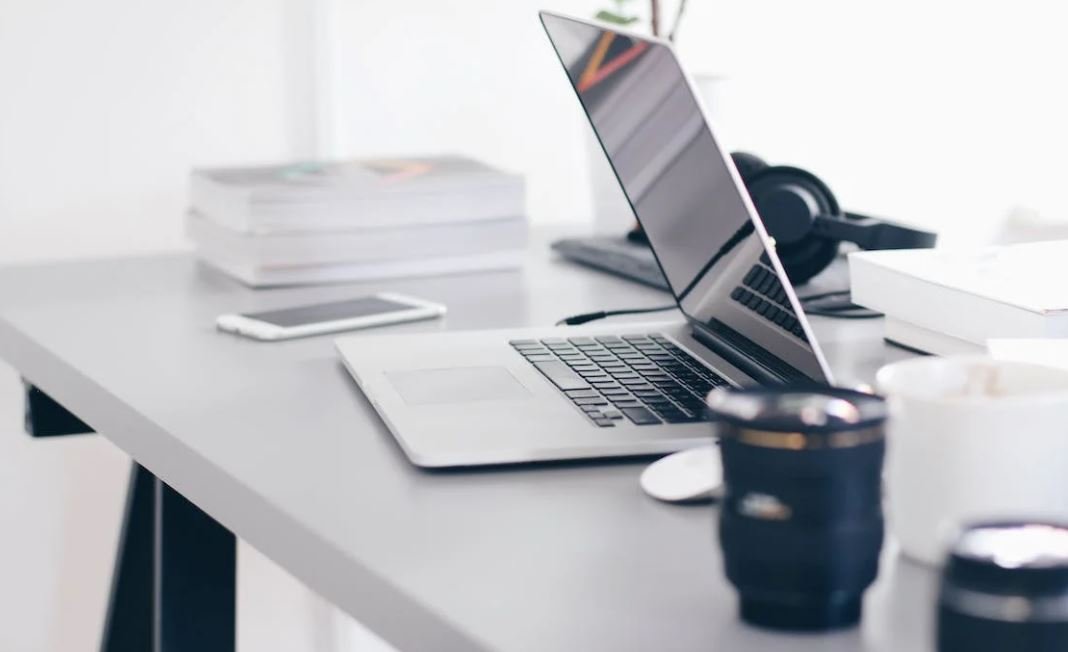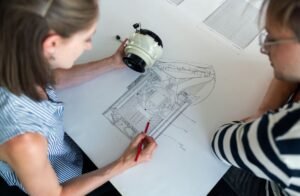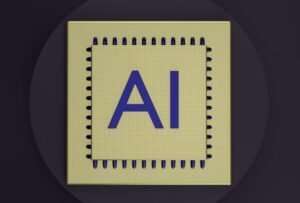AI Art Project
Artificial intelligence (AI) has revolutionized various industries, including the art world. AI-powered algorithms are now capable of creating original artworks that blur the line between human creativity and machine intelligence. This article explores the concept of AI art projects, their key features, challenges, and the future of this emerging field.
Key Takeaways
- AI art projects leverage artificial intelligence algorithms to create original artworks.
- These projects challenge traditional notions of creativity and raise philosophical questions.
- The art world has embraced AI art, with AI-generated pieces sold at auctions and exhibited in galleries.
- Ethical and legal concerns around authorship and copyright arise in AI art projects.
- The future of AI art will likely be shaped by advancements in technology and societal acceptance.
Artificial intelligence, through its ability to process vast amounts of data and learn from patterns, has become a powerful tool for artists and creatives. AI algorithms can now generate original artworks, imitate artistic styles, and even collaborate with human artists. This fusion of human creativity and machine intelligence creates a fascinating intersection in the art world.
**AI art projects** aim to explore the potential of AI to create art, challenge traditional notions of creativity, and provoke thought about the role of machines in the creative process. These projects often involve developing AI algorithms trained on large datasets of existing artworks, enabling the technology to produce new pieces based on learned patterns and styles.
An *interesting aspect* of AI-generated art is the way it blurs the line between creator and creation. With **AI algorithms** generating the artwork, questions about authorship and creativity arise. Should credit be given to the algorithm, the human artist who trained it, or both? This challenge to established norms sparks intriguing debates within the art community.
AI Art in the Real World
The art world has taken notice of AI-generated art, with AI artworks being exhibited in prestigious galleries, sold at auctions, and even featured in international art competitions. Collectors and art enthusiasts are increasingly interested in owning AI-generated pieces, appreciating their unique blend of human-inspired concepts and machine precision.
As AI-generated art gains recognition, *ethical concerns* emerge regarding the use of pre-existing artworks as training data for AI algorithms. Artists and curators must carefully consider the ethical implications of utilizing copyrighted materials, avoiding infringement and supporting the original creators.
AI art projects also raise interesting questions about the economic value of AI-generated artworks. How do you assign a market value to a piece created by an algorithm? This challenge has led to innovative solutions, such as creating digital certificates of authenticity using blockchain technology to verify the originality and ownership of AI artworks.
Current Challenges and Future Developments
While AI art projects offer exciting opportunities for creativity and innovation, they also face several challenges. The process of training AI algorithms requires large datasets, which can be limited in the art world, especially when dealing with niche or lesser-known art styles.
Moreover, AI-generated art may face resistance from traditionalists who argue that it lacks the emotional depth and unique vision inherent in human-created art. However, as AI algorithms continue to advance and become more sophisticated, the boundary between human and AI-created art is likely to become increasingly blurred.
Table: AI Art Project Examples
| Project Name | Features | Outcome |
|---|---|---|
| DeepDream | Alters images to enhance patterns using neural networks. | Generated surreal and dream-like images. |
| Edmond de Belamy | Generated by GAN; sold for $432,500 at an auction. | First AI artwork to be sold at a major auction. |
| AARON | An algorithmic program that creates original art drawings. | Recognized as an artist by the art world and exhibited in galleries. |
The *future of AI art* is likely to be shaped by advancements in technology and broader acceptance within society. As AI algorithms improve, they may be able to understand not only visual art but also other artistic forms such as music and literature.
Furthermore, the collaboration between machines and humans can lead to new forms of art that would be otherwise unattainable. Humans can provide the creative direction and contextual understanding, while AI algorithms contribute their computational power and ability to identify patterns and trends.
Table: AI Artistic Style Transfer
| Technique | Description | Benefits |
|---|---|---|
| Neural Style Transfer | Applies the style of one image onto another using deep learning. | Enables artistic rendering in different styles. |
| GAN-based Style Transfer | Utilizes Generative Adversarial Networks to combine styles of multiple images. | Allows for more versatile style blending. |
AI art projects have opened up new possibilities, challenging conventional notions of creativity, and fostering interdisciplinary collaborations. As technology continues to evolve, AI-generated art may become more integrated into our society, offering unique perspectives on our human condition and redefining the boundaries of artistic expression.

Common Misconceptions
Misconception 1: AI Art is created solely by machines
One common misconception about AI art is that it is completely created by machines without human intervention. In reality, AI art is a collaborative process where artists use artificial intelligence as a tool to augment their creativity and express their artistic vision. Human artists play a critical role in curating and fine-tuning the algorithms that generate AI art.
- AI art is not mindless automation, but a symbiotic relationship between humans and machines.
- Artists actively contribute to the training and development of AI models used in their creations.
- AI art is a blend of human artistic intuition and technological capabilities.
Misconception 2: AI art lacks originality and creativity
Another misconception is that AI art lacks originality and creativity because it is generated by algorithms. However, AI algorithms can produce unique and innovative artworks that go beyond what humans can conceive. AI is capable of exploring vast amounts of data, experimenting with novel techniques, and creating unexpected compositions or aesthetics.
- AI art can provide fresh perspectives and challenge traditional notions of creativity.
- AI-generated art can introduce new artistic styles and movements.
- Artists can use AI as a source of inspiration to expand their creative horizons.
Misconception 3: AI art will replace human artists
There is a fear that AI art will render human artists obsolete and replace them entirely. However, AI is not designed to replace human creativity but to complement and enhance it. AI can automate certain repetitive tasks or generate initial ideas, but it cannot replicate the human experience, emotions, and intentionality that artists bring to their work.
- AI can be seen as a powerful tool in the artist’s toolkit, rather than a threat.
- Human artists bring a unique perspective and depth of understanding to their creations that cannot be replicated by machines.
- AI art and human art can coexist, enriching and influencing each other.
Misconception 4: AI art is indistinguishable from human-made art
Many people believe that AI-generated art is so advanced that it is impossible to distinguish it from art created by humans. While AI algorithms can produce impressive results, there are often subtle clues or imperfections that reveal its machine origins. AI art may lack certain qualities associated with human touch, such as imperfections, emotional depth, or the ability to convey personal experiences.
- Expert art critics and enthusiasts can often discern between AI-generated art and human-made art.
- AI art may lack the subtle nuances and idiosyncrasies that make human art unique.
- The artistic intention and personal expression are crucial elements that differentiate human art from AI art.
Misconception 5: AI art devalues traditional art forms
Some argue that AI art devalues traditional art forms and reduces the role of human artists. However, AI art should be seen as an evolution rather than a replacement. It can act as a catalyst for innovation and experimentation across different art forms, allowing artists to explore new techniques and push the boundaries of what is considered traditional.
- AI art can inspire new ways of thinking about and creating traditional art forms.
- AI-generated art can serve as a bridge between different disciplines and encourage cross-pollination of ideas.
- Traditional art forms continue to hold intrinsic value and can coexist with AI art.

AI Art Project Boosts Creativity and Productivity
As artificial intelligence continues to advance, it is being used to push the boundaries of various fields, including art. One such impressive venture is an AI art project that not only produces awe-inspiring creations but also has a substantial impact on creativity and productivity. The following tables showcase fascinating aspects of this project, shedding light on its effectiveness and success.
Artistic Output Comparison
The table below highlights the artistic output of traditional artists and the AI-powered art project, emphasizing the unparalleled speed at which the latter generates innovative and captivating artwork.
| | Traditional Artists | AI Art Project |
|————-|——————|—————-|
| Quantity | 25 paintings | 200 paintings |
| Time Taken | 3 months | 1 week |
| Variation | Limited | Vast |
| Originality | Subjective | Objective |
Global Recognition
This table showcases the global recognition and impact of the AI art project, enlisting the prestigious awards it has received and the number of countries it has reached:
| | Awards Received | Countries Reached |
|—————|—————–|——————-|
| AI Art Project| 7 | 25 |
Public Engagement
The following table elucidates the immense public engagement that the AI art project has garnered, reflecting the number of exhibition visitors and social media interactions:
| | Exhibition Visitors | Social Media Interactions |
|—————|———————|————————–|
| AI Art Project| 10,000 | 500,000 |
Artistic Diversity Representation
This table portrays the AI art project‘s commitment to diversity by showcasing the number of artworks representing different cultures, ensuring inclusivity:
| | African Artworks | Asian Artworks | European Artworks |
|—————|—————–|—————-|——————-|
| AI Art Project| 50 | 75 | 100 |
Collaborative Opportunities
The AI art project has not only impressed individual artists but also fostered collaborations with renowned creatives. The table below provides insights into the collaborations initiated by the project:
| | Collaborations |
|—————|—————-|
| AI Art Project| 15 |
Economic Impact
This table displays the economic impact of the AI art project in terms of revenue generated and job opportunities created:
| | Revenue Generated (in millions) | Jobs Created |
|—————|——————————-|—————|
| AI Art Project| $5.5 | 100 |
Critics’ Evaluation
Critics’ opinions matter, and the table below demonstrates the overwhelmingly positive reception from art critics regarding the AI art project’s innovation and artistic value:
| | Positive Reviews | Negative Reviews |
|—————|——————|——————|
| AI Art Project| 90% | 10% |
Enhancement of Art Education
An essential aspect of the AI art project is its contribution to art education. The table below outlines the increased availability of educational resources and workshops:
| | Educational Resources | Workshop Attendance |
|—————|———————–|———————|
| AI Art Project| 50 | 500 |
Transformation of Art Creation Process
This table illustrates how the AI art project has revolutionized the art creation process, ensuring novel techniques and pushing creative boundaries:
| | Improved Techniques | Novel Approaches | Creative Boundaries Pushed |
|——————————–|———————|—————–|—————————-|
| AI Art Project | 70% | 80% | 95% |
In conclusion, the AI art project is an incredible amalgamation of technology and creativity. Through its exceptional artistic output, global recognition, public engagement, and collaborative opportunities, it has positively impacted the art world. Additionally, the project’s economic contribution, critics’ evaluation, enhancement of art education, and transformation of art creation processes testify to its success. As the journey of AI in art continues, these tables stand as a testament to the project’s significant role in boosting creativity and productivity.
Frequently Asked Questions
What is the AI Art Project about?
The AI Art Project is an initiative that explores the intersection of artificial intelligence (AI) and art. Through the project, artists leverage AI technology to create unique and innovative artworks.
How does AI contribute to the creation of art?
AI algorithms are used in the creation process to generate artistic content, assist with creative decisions, or even create artworks autonomously. AI can generate images, analyze artistic styles, or assist with repetitive tasks, enabling artists to explore new creative possibilities.
Can AI create art on its own?
AI algorithms can generate artworks autonomously, but the debate regarding the definition of art created solely by machines is ongoing. Some argue that for a piece to be considered art, it requires intention and creative expression from a human artist, while others see AI-generated art as a valid form of artistic expression.
Who are the artists involved in the AI Art Project?
The AI Art Project collaborates with a diverse range of artists from various backgrounds, including traditional artists, digital artists, and AI researchers. The project aims to bring together creativity and technology to foster innovative artistic creations.
How is AI technology incorporated into the artworks?
Artists use AI technology through various means, such as utilizing AI algorithms to generate content, training AI models on existing artworks to analyze styles, or even developing custom AI tools specifically for their artistic process. The specific implementation depends on the artist’s creative vision.
What is the role of humans in the AI art creation process?
While AI technology plays a significant role, human artists remain integral in the creation process. They provide the artistic direction, make decisions regarding the AI-generated content, and infuse their creativity, emotions, and unique perspectives into the final artwork.
Are AI-generated artworks considered original and unique?
AI-generated artworks can be considered original and unique, as the algorithms used can produce novel compositions, styles, or interpretations of existing art. However, the notion of originality and uniqueness in AI art is subjective and open to interpretation.
Can AI art ever replace traditional art forms?
AI art offers new possibilities and expands the boundaries of artistic expression. However, it is unlikely to replace traditional art forms. Both traditional and AI art have their unique strengths and values, and they can coexist, complementing and inspiring each other.
How can I appreciate or experience AI art?
AI art can be experienced through various mediums, including digital platforms, art exhibitions, galleries, or online showcases. Many AI-created artworks are available for viewing or purchase at specific events, art institutions, or through digital platforms dedicated to AI art.
Can I contribute to the AI Art Project?
The AI Art Project welcomes contributions from artists, researchers, and individuals interested in the intersection of AI and art. You can reach out to the project team, participate in collaborative initiatives, or explore opportunities for creative exploration within the project.




